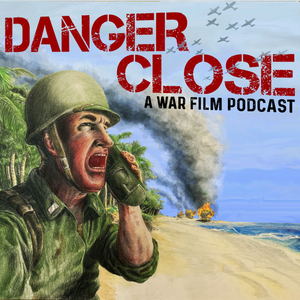Dave Feldmann
All-around medieval nerd, armor and weapons pedant, but not the kind of person you talk shit to his face in a bar.
To start, this movie Outlaw King begins at the close of what we can call the "First Phase" of the First War of Scottish Independence. They didn't call it that at the time, but that's what it’s called now. The Scots had been defeated at Falkirk, and most of the Scots fighting surrendered.
The political situation in Scotland and the future UK in general is enormously complicated. For example Robert the Bruce himself came from Norman stock, whose family had migrated to Scotland years before as nobles. As a nobleman, he, like many Scottish lords, had lands throughout England and Wales. Scottish Nobles would also frequently be allies of the English crown, but might also have lands in France as well, making alliances with the French monarchy as attractive as one with the English. The so-called Auld Alliance, the military alliance between France and Scotland which would go on to exist for centuries, began just before Outlaw King.
At this time Highland clans were still very powerful in Scotland, and their allegiance might change very quickly. Outlaw King actually underscores how malleable the situation was in terms of shifting alliances and betrayals. This is just one of those things that you have to get used to in Scottish history -- there is a ton of backstabbing.
Edward I did call his trebuchet the Warwolf but he did not have Greek fire.
The nobles of the time would have spoken French to each other, and the Scots would have spoken Scots.
I have no idea what's going on with the little duel between the future King Edward II and Robert but it’s bad swordplay for the most part. Neither man should be tired after a few exchanges but I guess they're drunk or something.
The sneak attack led by fire arrows is absurd. The film shows the English army less than 100 yards from the main camp. Even though Robert the Bruce wasn't nearly as skilled in battle at this time as he would eventually be, moving an entire army that close would have made enough noise to rouse the camp, especially if the Scots had set sentries, as was common.
Not much is known about the battle, other than The Bruce lost very badly. Scottish records claim that the Bruce was unhorsed twice and nearly captured twice.
The castle where Florence Pugh and the family of Robert the Bruce's family seems very large for the time, almost like a castle from say the 16th century, or built via 21st century digital effects. Also, disemboweling a guy doesn't immediately kill him, or immediately turn into a digital blood effect that looks like a cut scene from the video game "Manhunt."
"Where the fuck have you been???!!!!" Traditional greeting of Celtic women to their returning men.
The fight scene where Bruce takes his own castle is pretty decent. The choreography has fighters in dynamic situations, using shields to protect themselves from multiple enemies while dispatching opponents of opportunity.
The Scots had proven themselves skilled guerilla fighters during the Wars of Scottish Independence and this is a good way of underscoring that.
Longshanks was not buried on the road, but in Westminster. His demand, that his body be boiled and carried as a standard until Scotland was crushed, is thought to be historically accurate, and remains the most metal thing to come out of England.
Battle of Loudoun Hill
Basics are right but Bruce's line was even shorter, and the swamps on either side were utterly impassable. The English repeatedly charged headlong into three gullies that the Bruce's men had prepared, and suffered heavy casualties.
Edward II was not on the field at Loudon, the English army was commanded by Aymer de Valence, who had defeated Bruce at Methven.
Longswords don't cut through chainmail, but they can sometimes pierce chainmail. Why wear it if the Black Douglass can just slash through it at will? Battleaxes and halberds were known to slash through mail with a good cut but hardly any of the soldiers on either side use these.
Generally, the English and the Scots are armed properly. The English armies that invaded Scotland repeatedly during the Scottish Wars of Independence are extremely well-documented. Perhaps as many as half received pay for their service, were outfitted by the royal treasury, and some amount of uniformity in kit and armaments could be expected. The infantry would have fought as heavy infantry, as depicted, but would have used bell hooks (pic). Knights would have used lances as their primary weapon and used their swords or battle axes once the lance was broken after charging the enemy. In the movie The English cavalry charge without lances and use swords from the beginning.
The Scots on the other hand were extremely lightly-armed, few had armor, and the Bruce obviously had no treasury or reserves with which to pay his soldiers or buy or manufacture equipment. Most of the Bruce's men would be armed with their own equipment or equipment looted from their enemies, both the English and Scots allied with the English.
At least we don't have Robert the Bruce running around with a German landsknecht greatsword from the Protestant Reformation, not that we're talking about a certain Mel Gibson film which is one of the least historically- accurate films ever made.
